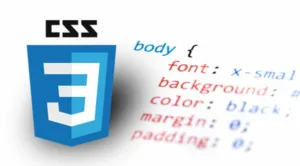I’m currently working on designing a layout similar to the one attached in the screenshot To achieve this, I’ve opted for CSS Grid for its ease of use and responsiveness.
However, I’ve encountered a challenge. I want each box to dynamically adjust its height based on its content, without affecting the heights of other boxes in the same row. Currently, when one box increases in height due to its content, it affects the heights of all other boxes in the row.
Is there a way to achieve the desired behavior without compromising the responsiveness of the layout? If not with CSS Grid, would you recommend a different approach that better suits my requirements?
* {
margin: 0;
padding: 0;
box-sizing: border-box;
}
body {
background-color: blueviolet;
padding: 5%;
}
.parent-container {
display: grid;
grid-template-columns: repeat(auto-fill, minmax(300px, 1fr));
grid-gap: 2rem;
}
.box {
background-color: aqua;
min-height: 300px;
}<div class="parent-container">
<div class="box">**Lorem ipsum 200**
</div>
<div class="box">Item 2</div>
<div class="box">Item 3</div>
<div class="box">Item 4</div>
<div class="box">Item 5</div>
<div class="box">Item 6</div>
<div class="box">Item 7</div>
<div class="box">Item 8</div>
<div class="box">Item 9</div>
<div class="box">Item 10</div>
<div class="box">Item 11</div>
<div class="box">Item 12</div>
<div class="box">Item 13</div>
<div class="box">Item 14</div>
<div class="box">Item 15</div>
<div class="box">Item 16</div>
<div class="box">Item 17</div>
<div class="box">Item 18</div>
<div class="box">Item 19</div>
<div class="box">Item 20</div>
</div>
 Question posted in
Question posted in 

2
Answers
You can easily do this. You should use align-items on the .parent-container element, then the box height will increase dynamically based on your content’s height.
You can use any of the following according to your requirement
Using Grid Row Span
You can make a specific grid item span multiple rows, which will effectively increase its height. This can be done using the grid-row property.
Using Line-based Placement
You can place a grid item between specific row lines to control its height precisely.
Using Min-Height
You can also use min-height on a specific grid item to increase its height, provided the grid layout supports the change without breaking the overall design.
Using Align-self
In some cases, you might want to align a specific item differently within its grid area. This won’t increase the height but can change its vertical alignment.
Each of these methods can be used depending on your specific layout requirements and the behavior you want to achieve.